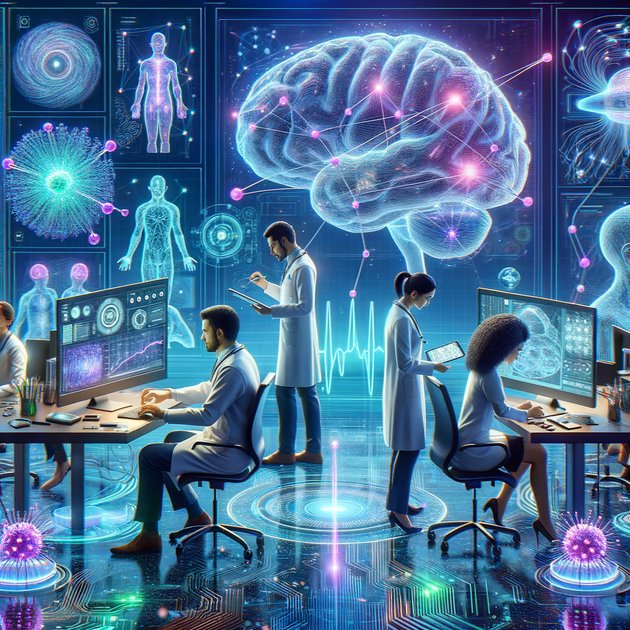Unraveling the Brain’s Mysteries: How AI is Revolutionizing Neuroscience
Imagine holding the blueprints to human thought and behavior. Sounds like science fiction? This is rapidly becoming reality, thanks in part to the groundbreaking work at Argonne National Laboratory. The labyrinth of neural connections within the brain has long intrigued scientists, but now, Artificial Intelligence is the key that promises to unlock these mysteries.
The Brain: An Unmatched Marvel
Our brain, weighing merely about three pounds, is an intricately woven matrix of 80 billion neurons. Each neuron, astonishingly, can form up to 10,000 connections, creating a network that’s almost unfathomable. Deciphering these connections isn’t just a fascinating scientific endeavor—it’s a herculean task that promises profound impacts on our understanding of behavior, brain diseases, and beyond.

Thomas Uram, Data Science and Workflows Team Lead
Credit: Argonne National Laboratory
The AI-Powered Journey Begins
While a complete brain map might be years away, scientists at Argonne National Laboratory are laying crucial groundwork today. Spearheading this initiative is Nicola Ferrier, Senior Computer Scientist. By leveraging powerful AI technologies, they aim to decode the brain’s elaborate network, slice by slice.
According to Thomas Uram, who’s a key researcher in this project, “The brain is one of the most complex things on the planet, and we don’t totally understand how it works. What we’re trying to do is reconstruct its structure and connectivity.”
Real-World Example: Imagine looking at a cubic millimeter of brain tissue. Argonne’s team uses AI to magnify, segment, and piece together the neuronal connections from thousands of 30-nanometer-thick slices. This detailed reconstruction can illuminate the still-shadowy workings of the brain.
Neural Networks: The AI Backbone
One of the standout technologies in this venture is Google’s Flood-Filling Network (FFN). This specialized neural network adeptly segments neurons in electron microscopy images, separating them from other cellular matter. The outcome? A detailed map of neural pathways crucial for understanding behavior and diseases.

Transformative Potential and Challenges
However, even with sophisticated neural networks, the enormity of data remains a challenge. A single cubic millimeter of brain tissue generates around two petabytes of data, stretching the limits of current computational power. Uram points out that scaling this up to a whole human brain requires astronomical computing capacities—far beyond what today’s most advanced systems can handle.
Future Prospects: Mapping a mouse brain, which is thousand times smaller than a human brain, would still take 3,000 days on all of Aurora’s computing power. For a human brain, this is three million days—an unsustainable duration.
Innovating for the Future
The staggering computational and storage needs are prompting scientists to rethink approaches. Building machines exponentially more powerful isn’t the sole solution. Instead, technological advancements in neural networks and data handling techniques could spearhead progress. Uram believes we will see significant advances in the technology that will improve segmentation speeds and efficiency.
Beyond the Brain: Broader Implications
The ripple effects of these advancements extend well beyond neuroscience. Innovations in AI-powered brain mapping can pave the way for better machine learning models across various domains, from healthcare and education to finance and cybersecurity. Improved neural networks could refine everything from image recognition to autonomous systems.
Conclusion: The Promising Horizon
While the quest to map the human brain is fraught with challenges, the work completed by Uram and his colleagues sets the stage for monumental leaps in our understanding of the human mind. As AI continues to evolve, so too will our capabilities to explore the deepest enigmas of brain science.
What do you think about the impact of AI in neuroscience? How do you foresee these advancements shaping our future? Share your thoughts in the comments below!
